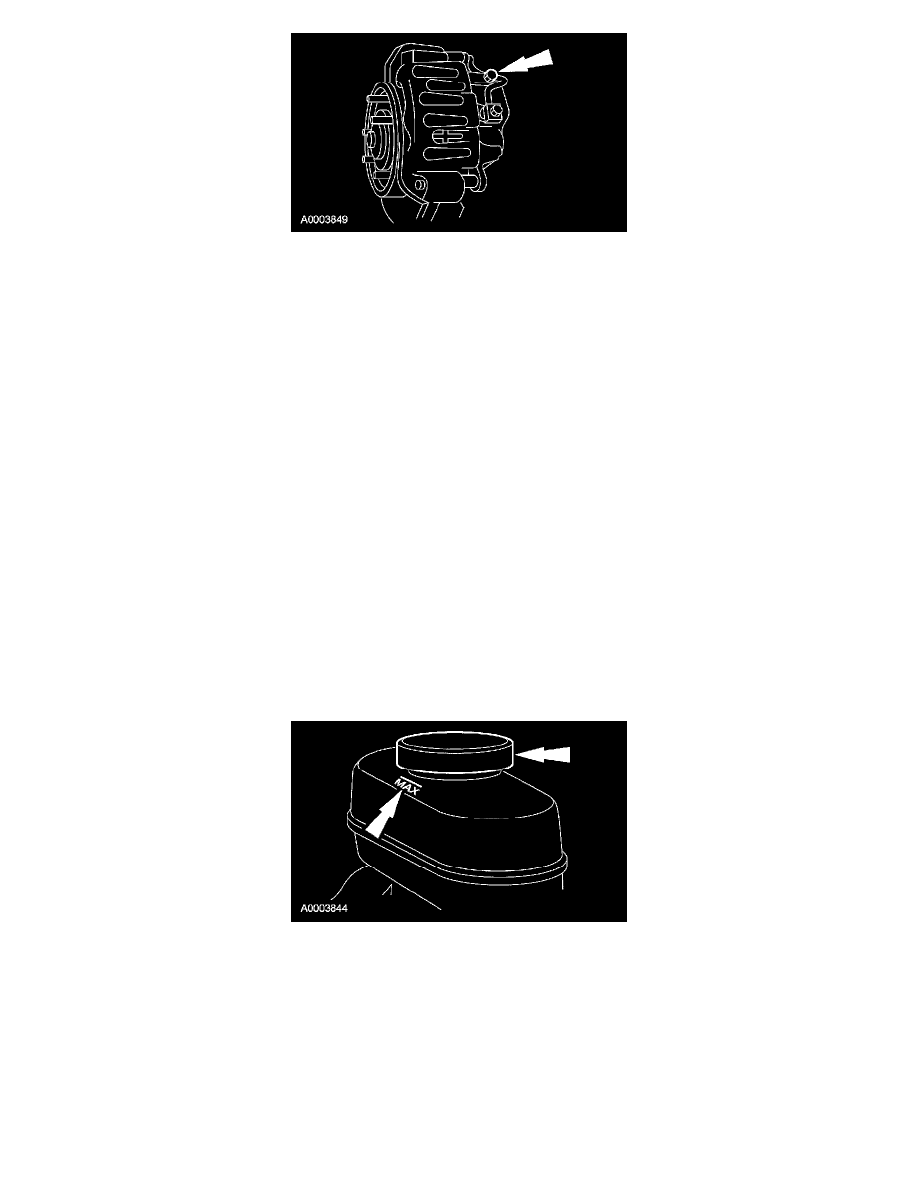Five Hundred 2WD V6-3.0L VIN 1 (2006)

9. Loosen the RH front brake caliper bleeder screw until a stream of brake fluid comes out. While the assistant maintains pressure on the brake pedal,
tighten the RH front brake caliper bleeder screw.
^
Repeat until clear, bubble-free fluid comes out.
^
Refill the brake master cylinder reservoir as necessary.
10. Tighten the RH front brake caliper bleeder screw and install the bleeder cap.
^
Tighten to 12 Nm (9 ft. lbs.).
11. Repeat Steps 8, 9, 10 and 11 for the LH front brake caliper bleeder screw.
Pressure
WARNING: Use of any other than approved DOT 3 brake fluid will cause permanent damage to brake components and will render the
brakes inoperative. Failure to follow these instructions may result in personal injury.
WARNING: Brake fluid contains polyglycol ethers and polyglycols. Avoid contact with eyes. Wash hands thoroughly after handling. If
brake fluid contacts eyes, flush eyes with running water for 15 minutes. Get medical attention if irritation persists. If taken internally, drink
water and induce vomiting. Get medical attention immediately. Failure to follow these instructions may result in personal injury.
CAUTION: Brake fluid is harmful to painted and plastic surfaces. If brake fluid is spilled onto a painted or plastic surface, immediately wash it with
water.
CAUTION: Do not allow the master cylinder to run dry during the bleeding operation. Keep the master cylinder reservoir filled with the DOT 3
motor vehicle brake fluid. Never reuse the brake fluid that has been drained from the hydraulic system.
NOTE: Due to the complexity of the fluid path within the rear integral parking brake calipers, it is necessary to press and release the parking brake
during the bleed procedure.
1. NOTE: If the hydraulic control unit (HCU) or any component upstream of the HCU are installed new, carry out the Brake System Pressure
Bleeding procedure, then the anti-lock HCU bleed procedure, followed by another Brake System Bleed Procedure.
Clean all the dirt from the area and remove the brake master cylinder filler cap. Fill the brake master cylinder reservoir with the specified brake
fluid.
2. NOTE: Master cylinder pressure bleeder adapter tools are available from various manufacturers of pressure bleeding equipment. Follow the
instructions of the manufacturer when installing the adapter.
Install the bleeder adapter to the brake master cylinder reservoir, and attach the bleeder tank hose to the fitting on the adapter.
